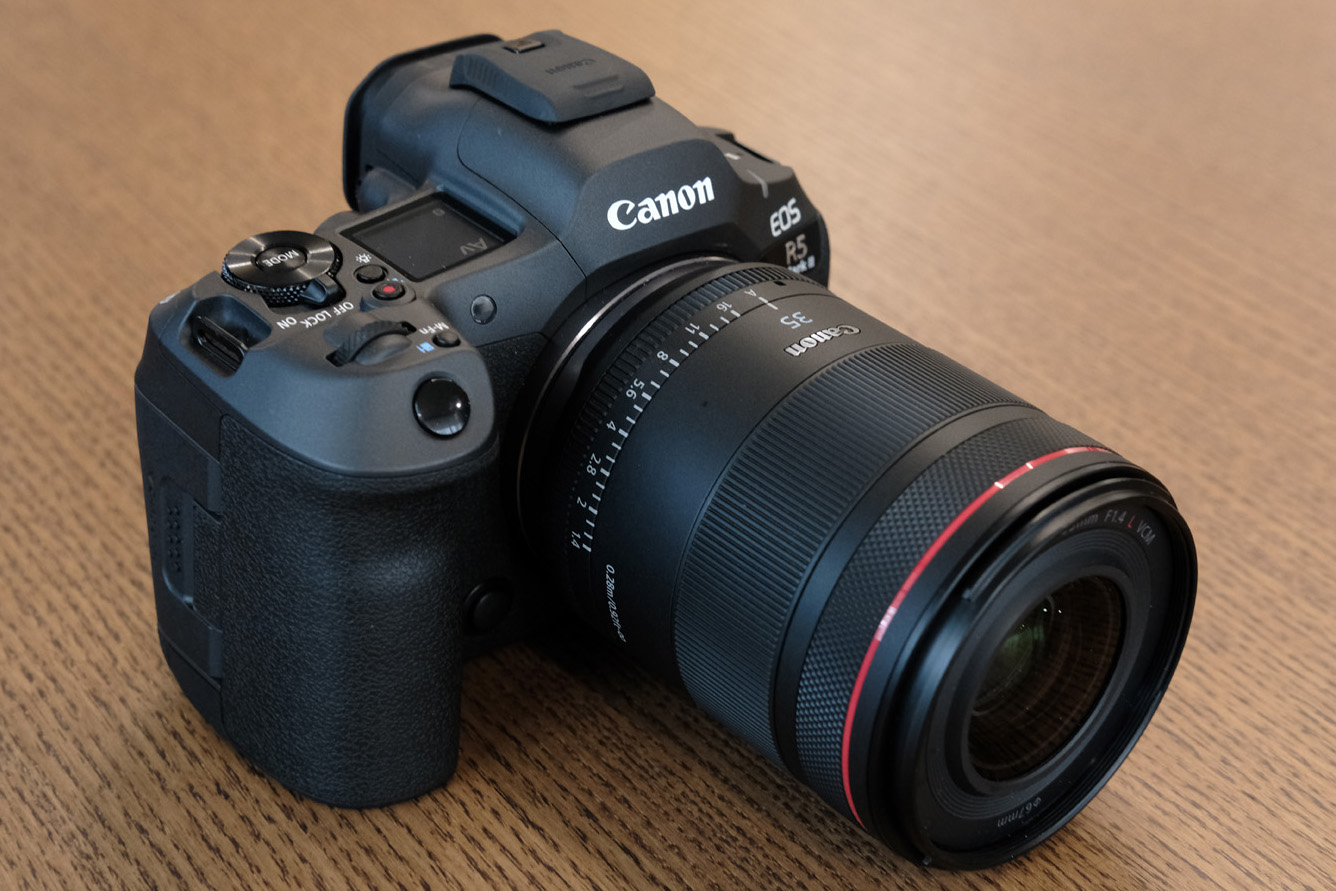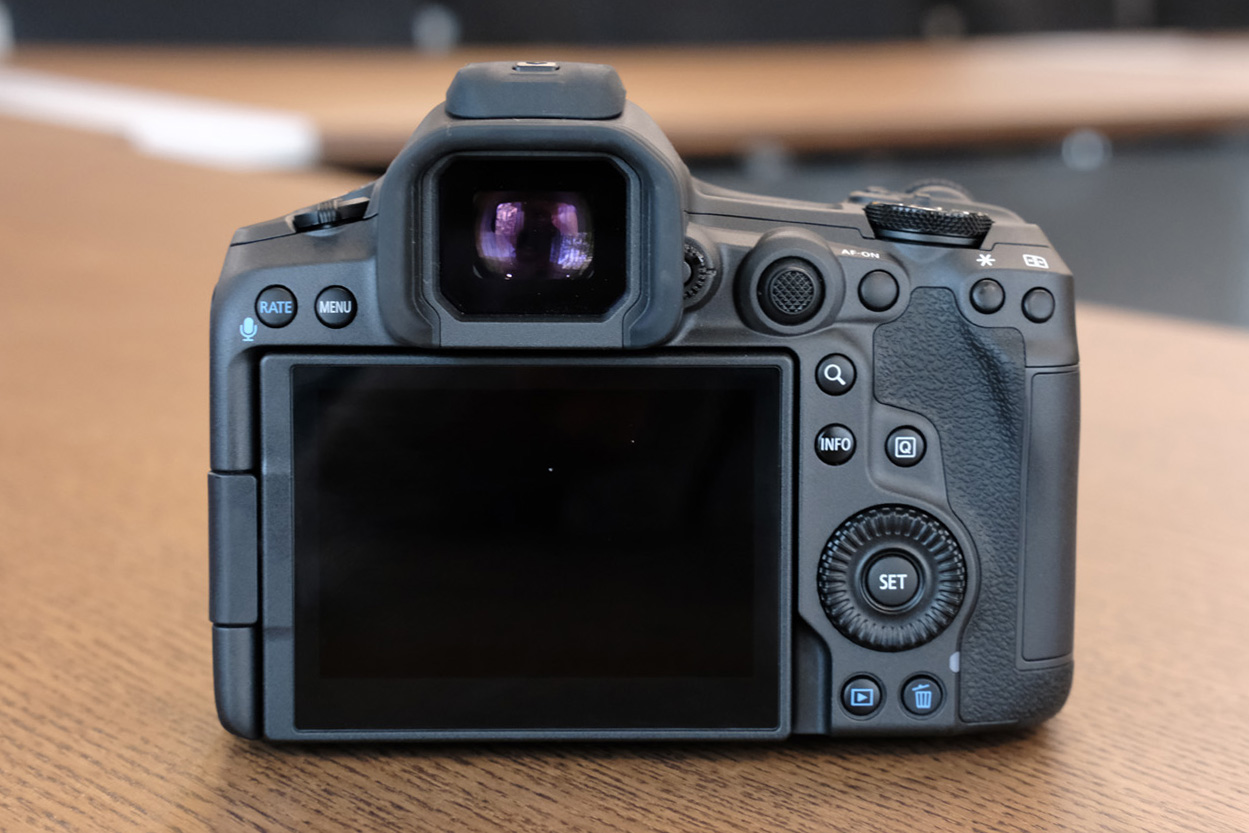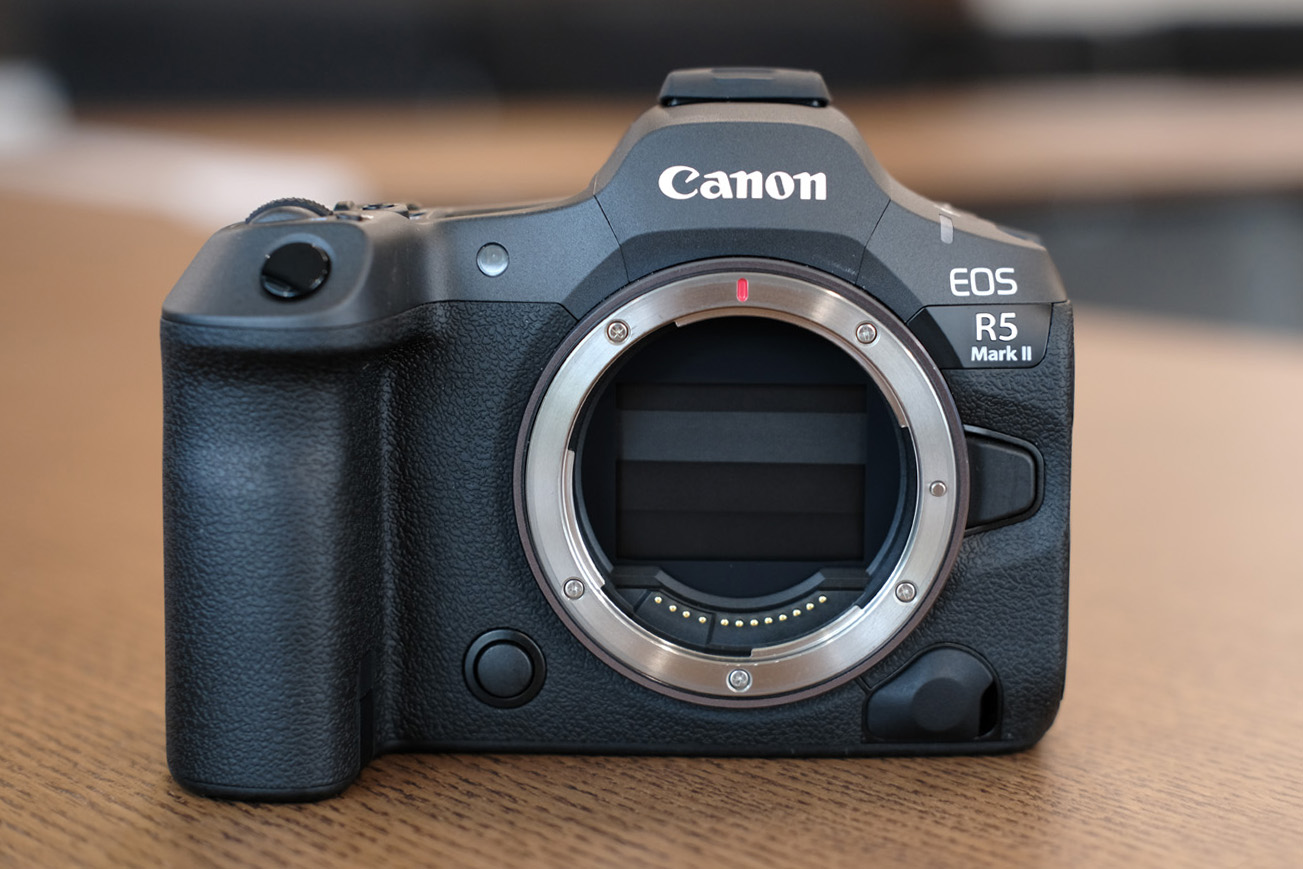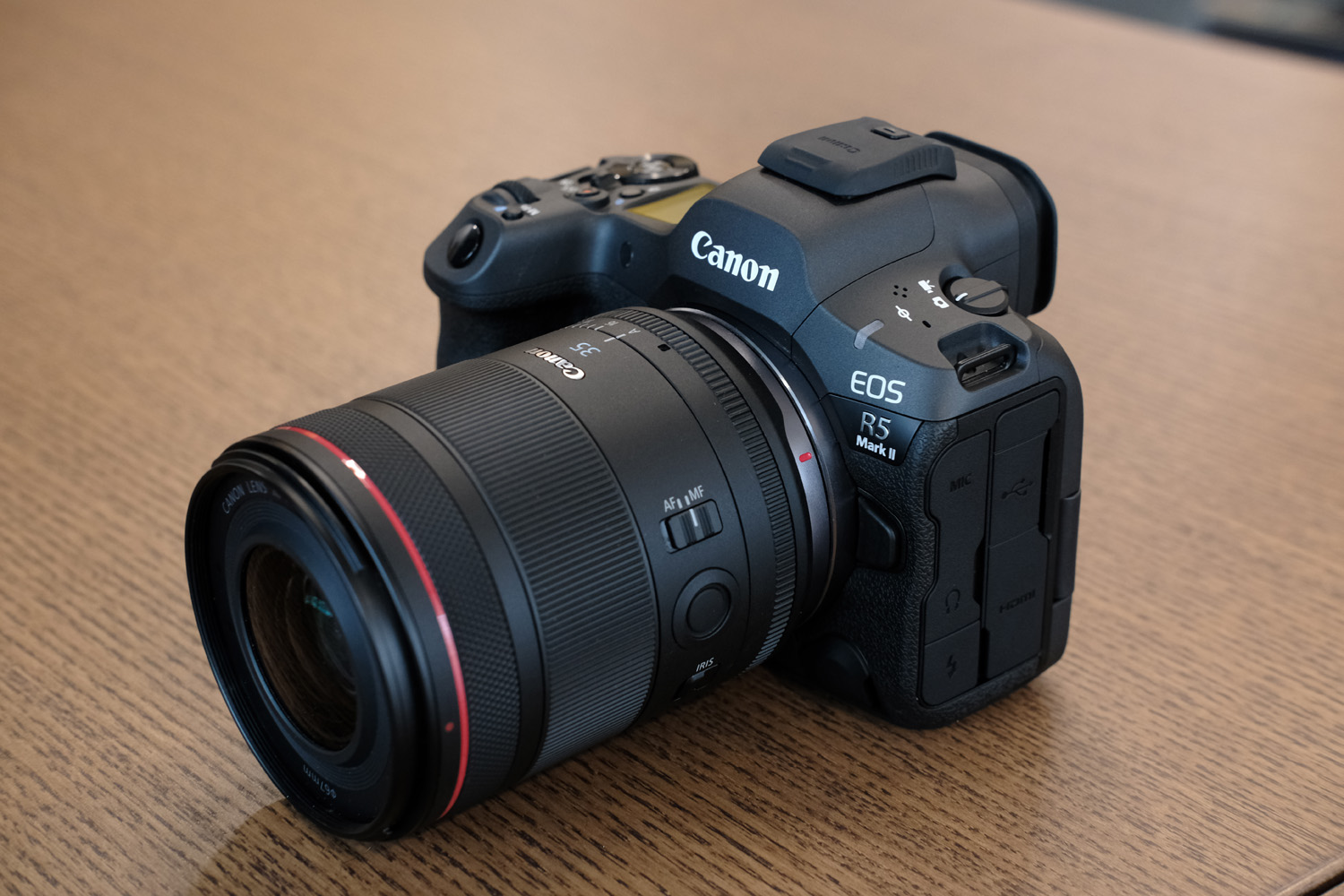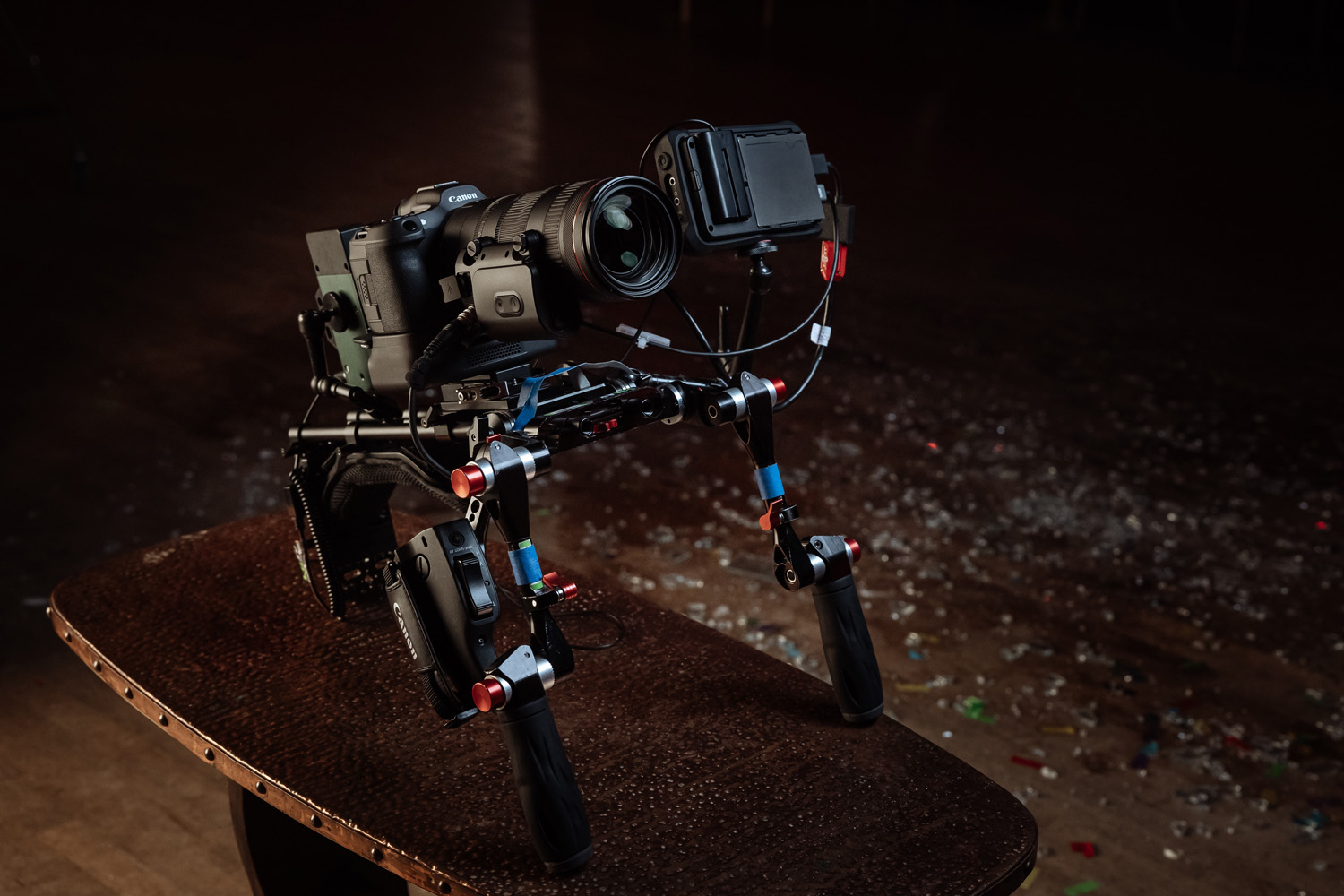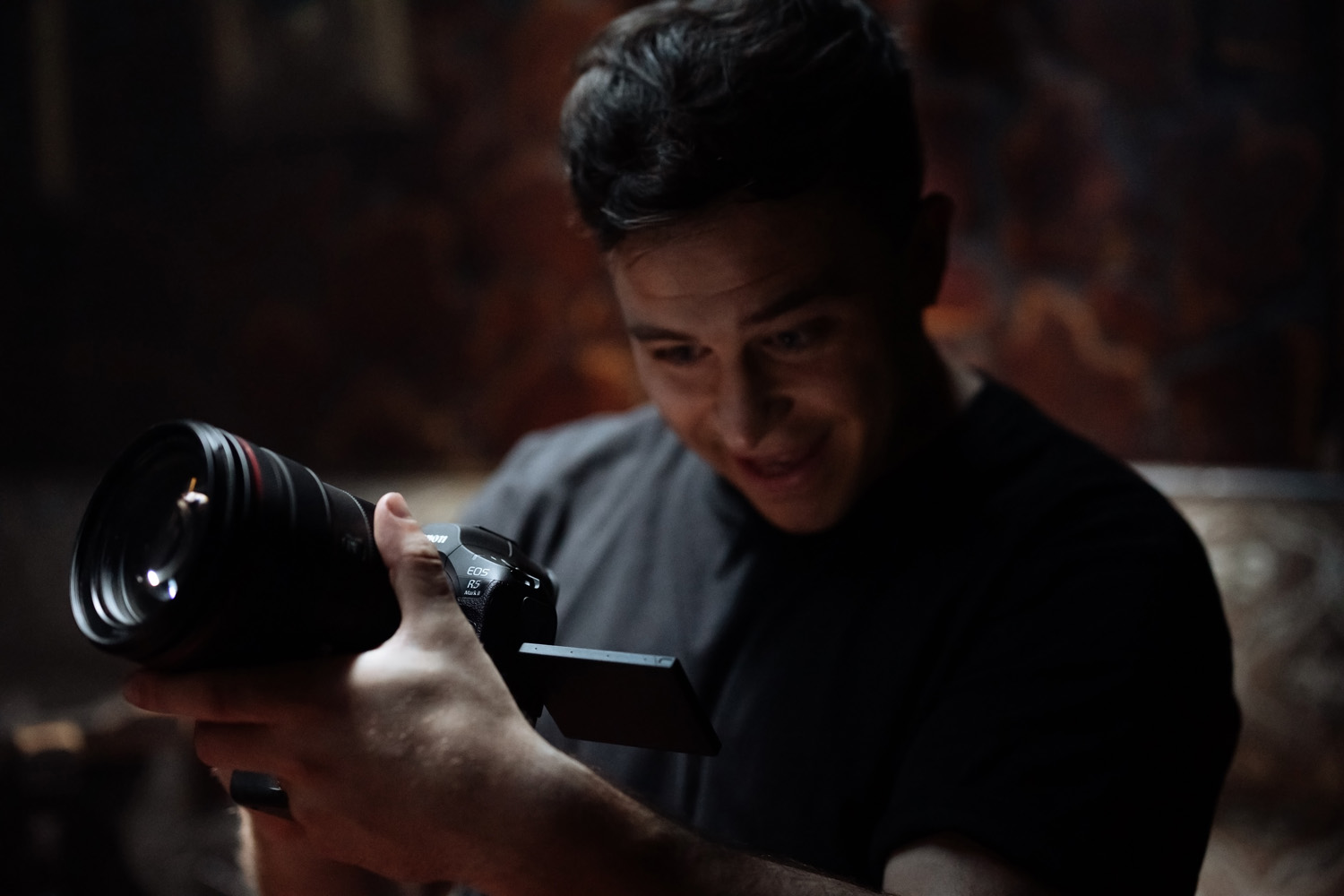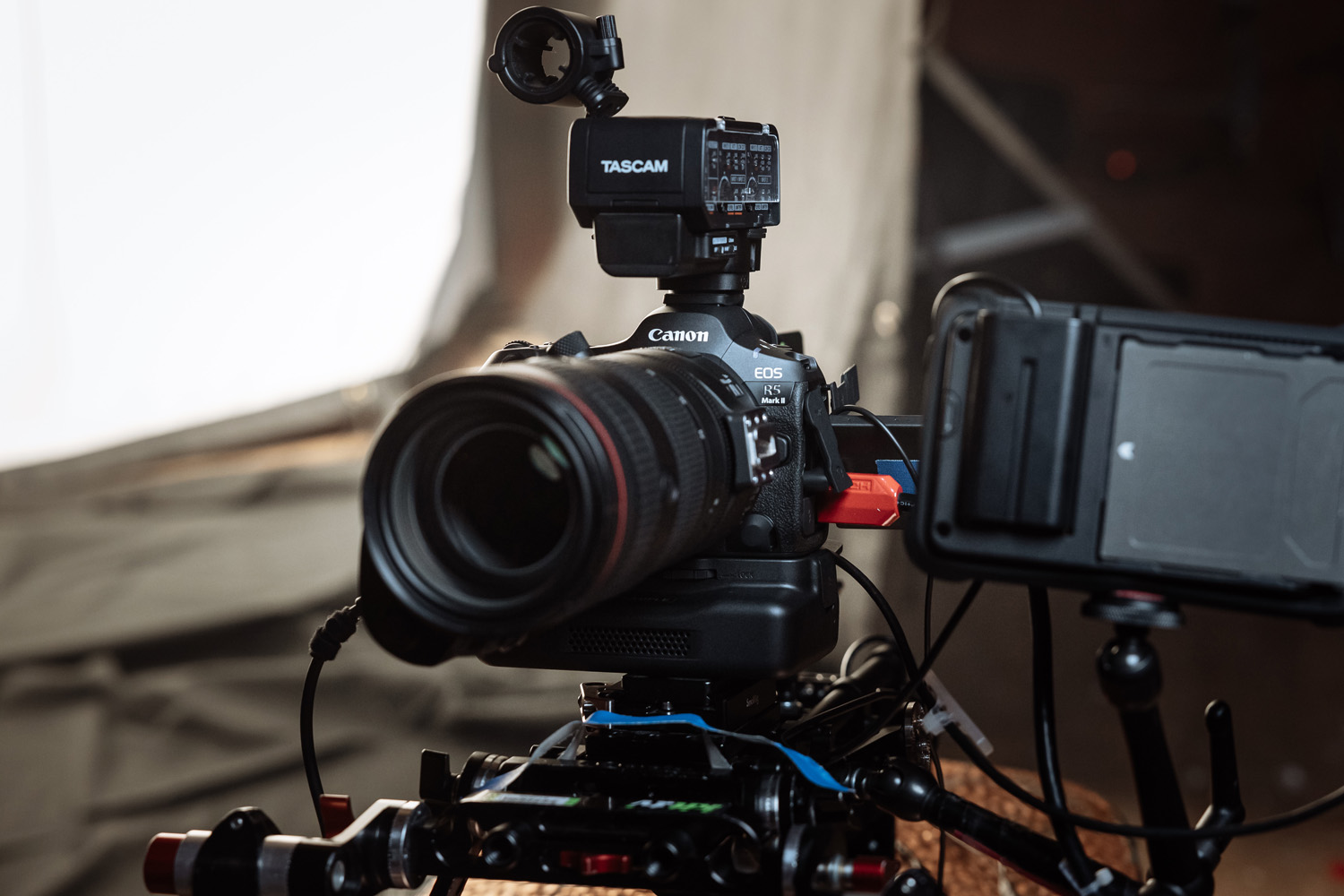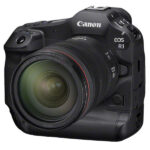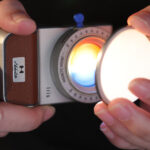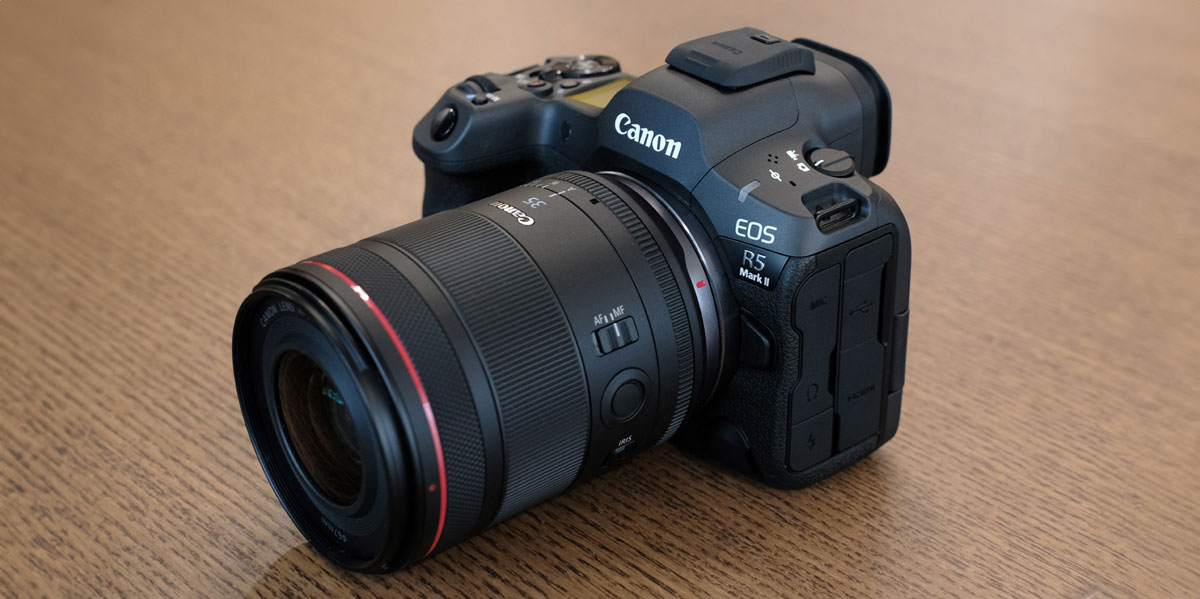
Canon EOS R5 Mark II first test review
Posted on Jul 17, 2024
Take a first look at the Canon EOS R5 Mark II in our initial hands-on review
The follow up to the Canon EOS R5 has arrived and we were invited by Canon to try out this new hybrid powerhouse in advance of its official launch.
What is the EOS R5 Mark II and who should buy it?
It was 16 years ago that Canon introduced the EOS 5D Mark II digital SLR camera, which quickly caught attention as the first EOS camera to also offer video recording capabilities. By bringing 1080p video to full-frame DSLR cameras, it provided a high-quality solution for both photo and video users at the same time.
Many would say that this high-end hybrid flexibility paved the way for the ‘hybrid camera’ segment of the market that we know and love today, giving the 5 series considerable provenance. No pressure, then.
The EOS R5 Mark II continues in the same vein, with hybrid creators very much in its sights. But this camera goes beyond the requirements of casual content creators with some serious features and significant improvements on its predecessor, the EOS R5.
The camera is extremely capable in both stills and video shooting with a high-resolution full-frame sensor, 8K video capabilities, upgraded processor, very capable AF, in-body stabilisation and more.
Canon is positioning it as a camera for creative storytellers at both enthusiast and professional levels and with camera-in-hand usability in mind, we would agree. However, some might argue that the proposed body-only cost of £4,499 will price many of the former out of the market.
What are the key features of the EOS R5 Mark II?
This camera has a lot to talk about, so let’s take a closer look at some of the key features of the EOS R5 Mark II.
Sensor & processor
At the heart of the camera is a full-frame back-side illuminated stacked sensor. This is paired with a new processor combination that Canon is calling Accelerated Capture. It consists of the DIGIC X and DIGIC Accelerator processors and, in addition to faster readouts, it enables a host of other impressive features (see below).
For stills, the camera delivers 45MP of resolution and blackout-free continuous shooting speeds of up to 30fps. It also achieves a 60% reduction in rolling shutter compared to its predecessor, according to Canon.
On the video side it is possible to achieve 8K/60p RAW footage, 4K/120p and 2K/240p.
Autofocus
Autofocus is certainly one of the headline improvements in this camera. It uses Canon’s Dual Pixel Intelligent AF and in addition to a low-light limit of -6.5EV, it offers some neat functionality.
Action priority
The first and possibly most impressive is the action priority mode. This uses AI to recognise specific movements that are unique to certain sports and uses them to predict where the action is about to take place.
The camera then focuses on that point, ensuring critical moments are always captured in crisp detail.
The technology currently recognises three sports: football, basketball and volleyball. We imagine this list will grow and hopefully via firmware update, although Canon has not confirmed this.
Registered people priority
This feature allows you to ‘register’ up to 10 different people by adding a photo of their faces. Once registered, the camera uses facial recognition to pick them out from a crowd and ensure focus is on them.
Unfortunately, we did not have access to any of the above-mentioned sports or crowded action during our hands on session, so we were unable to test the feature. But we were assured by Canon that the camera had performed well with ambassadors during testing.
Eye-control AF
One thing we were able to test was the improved eye-control AF feature. The main upgrades on the EOS R3’s eye control are a higher pixel count sensor, increased detection speed and an updated detection algorithm.
The size of the detection area has also been increased and this is apparent from the larger EVF display.
After a relatively simple calibration process, I was impressed with its performance in practice, especially as a glasses wearer. It moved quickly and accurately between subjects and felt intuitive from the get-go.
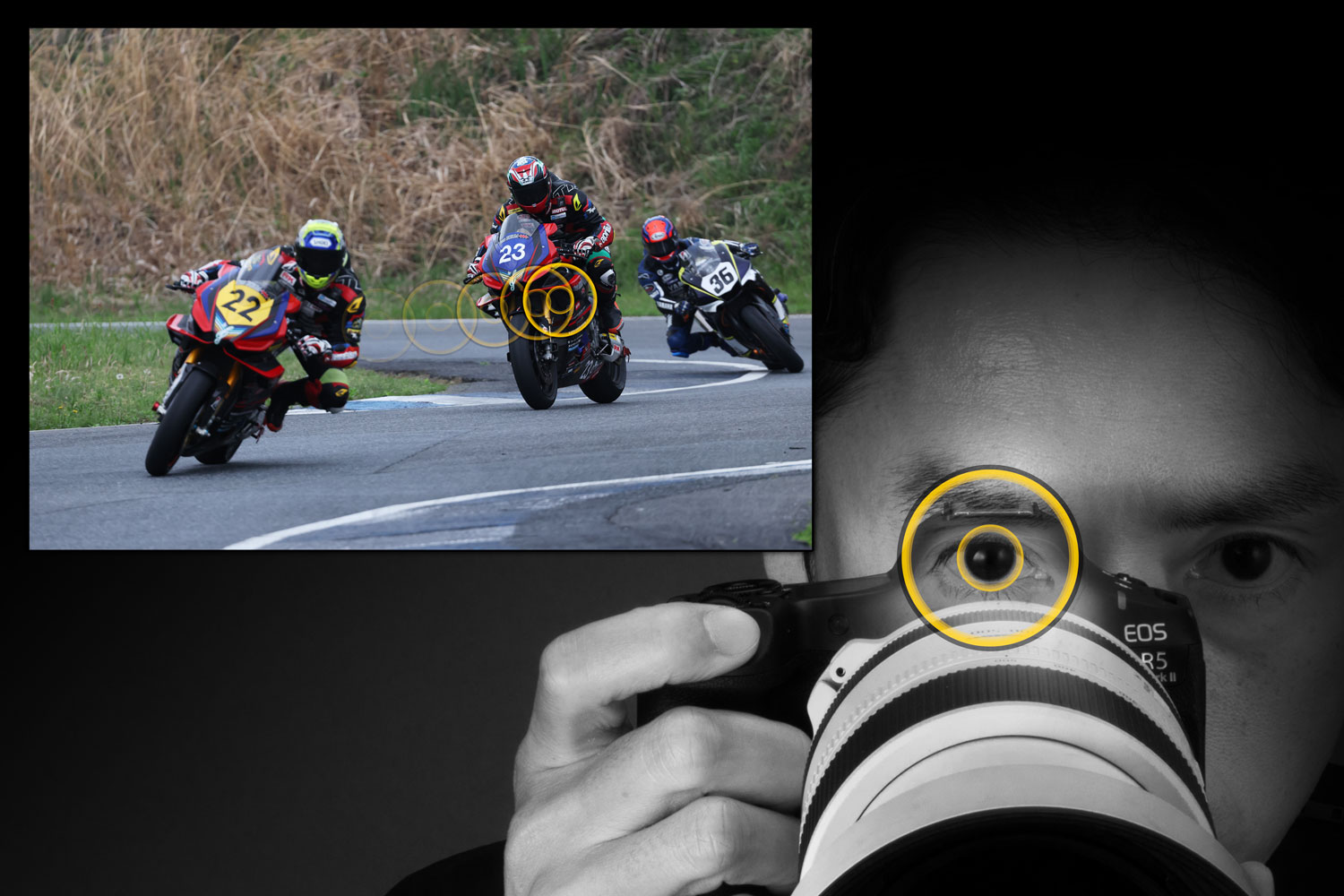
Size & handling
The EOS R5 Mark II is comfortable in hand, with an ample grip and a similar button configuration to the EOS R5. There is also a tilting flip-out touchscreen and 8.5 stop image stabilisation to aid steady handheld footage.
The body measures 138.5mm(w)x101.2mm(h)x93.5mm(d), weighs in at 746g with card and battery, and is also dust and weather resistant, so it has all the makings for strong performance on location.
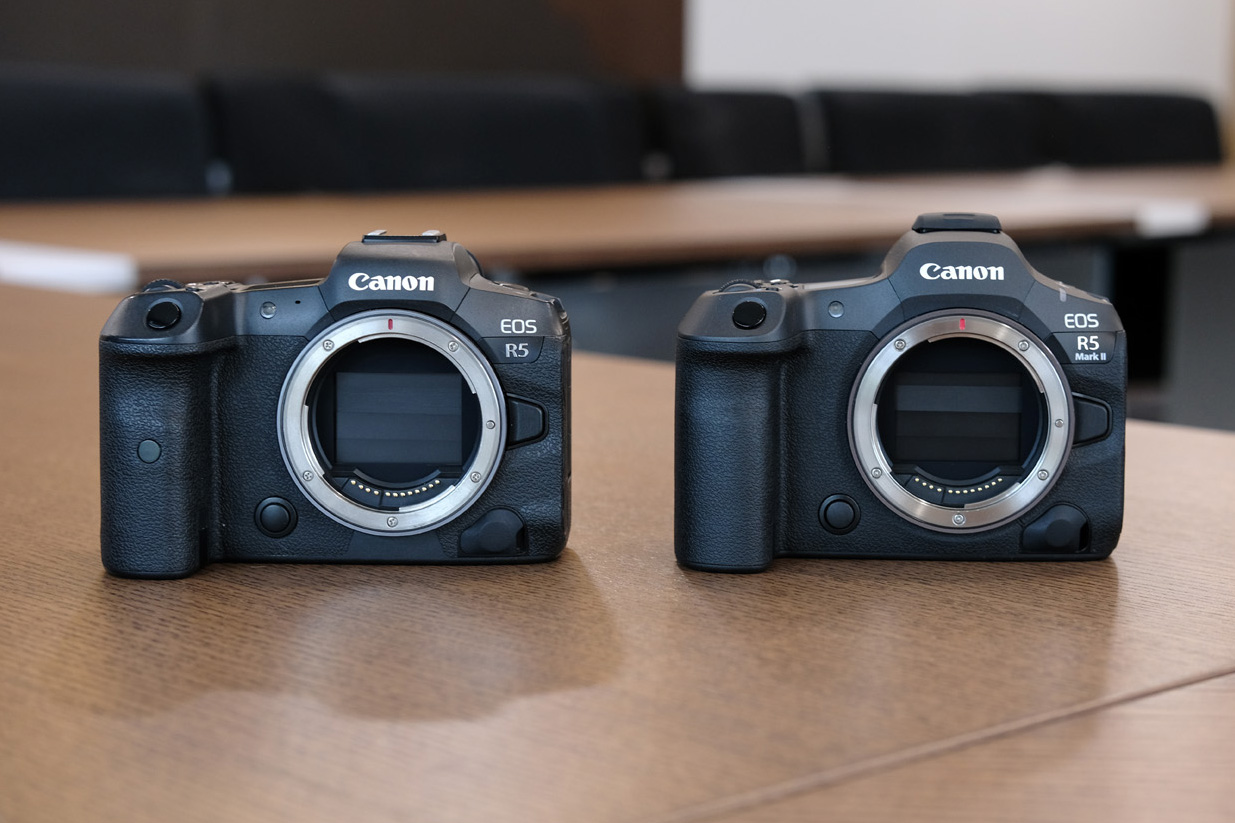
Video features
The EOS R5 Mark II is a very capable video camera. It can record 12-bit RAW footage in camera and offers greater support for Cinema EOS.
8K/60p, 4K/120p and 2K/240p are all possible and the camera supports RAW, XF-HEVC, S/XF-AVC S, Canon Log 2/Log 3 and 4CH, 24-bit audio.
It is also possible to capture stills while recording video with no interruptions, which, alongside the EOS R1, is the first time this technology has been available in an EOS camera.
Other features
Other notable features made possible with the new processor are in-camera image upscaling and noise reduction.
You may have used the technology before in the Canon app, however, it is now possible to perform the operation in-camera.
The upscaling worked well in camera, creating a 4x larger image at a surprisingly fast speed. The AI-assisted noise reduction processing is also handy to have on board, saving additional steps in your workflow.
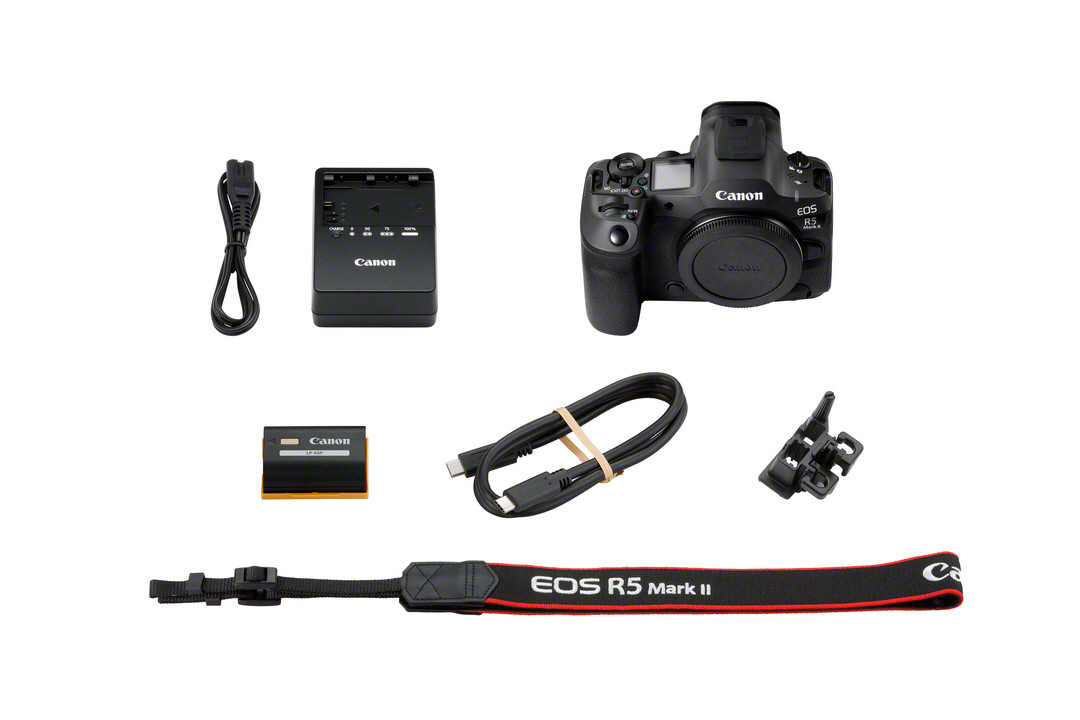
EOS R5 Mk II verdict
The EOS R5 Mark II is a very capable bit of kit that has more than enough muscle to hold its own in the professional photo and video sectors.
While the cutting-edge technology inside this camera is beyond the comprehension of most of us, it remains accessible and easy to use.
This means the camera does a great job of fulfilling its purpose, which is to put the best tools at the fingertips of creators, regardless of medium and genre.
EOS R5 Mk II price & availability
The Canon EOS R5 Mark II will be available to buy in August 2024 with a body-only price tag of £4,999.99 or £5,799.99 in a kit with the RF24-105mm f/4 lens.
For more information visit the Canon website.

